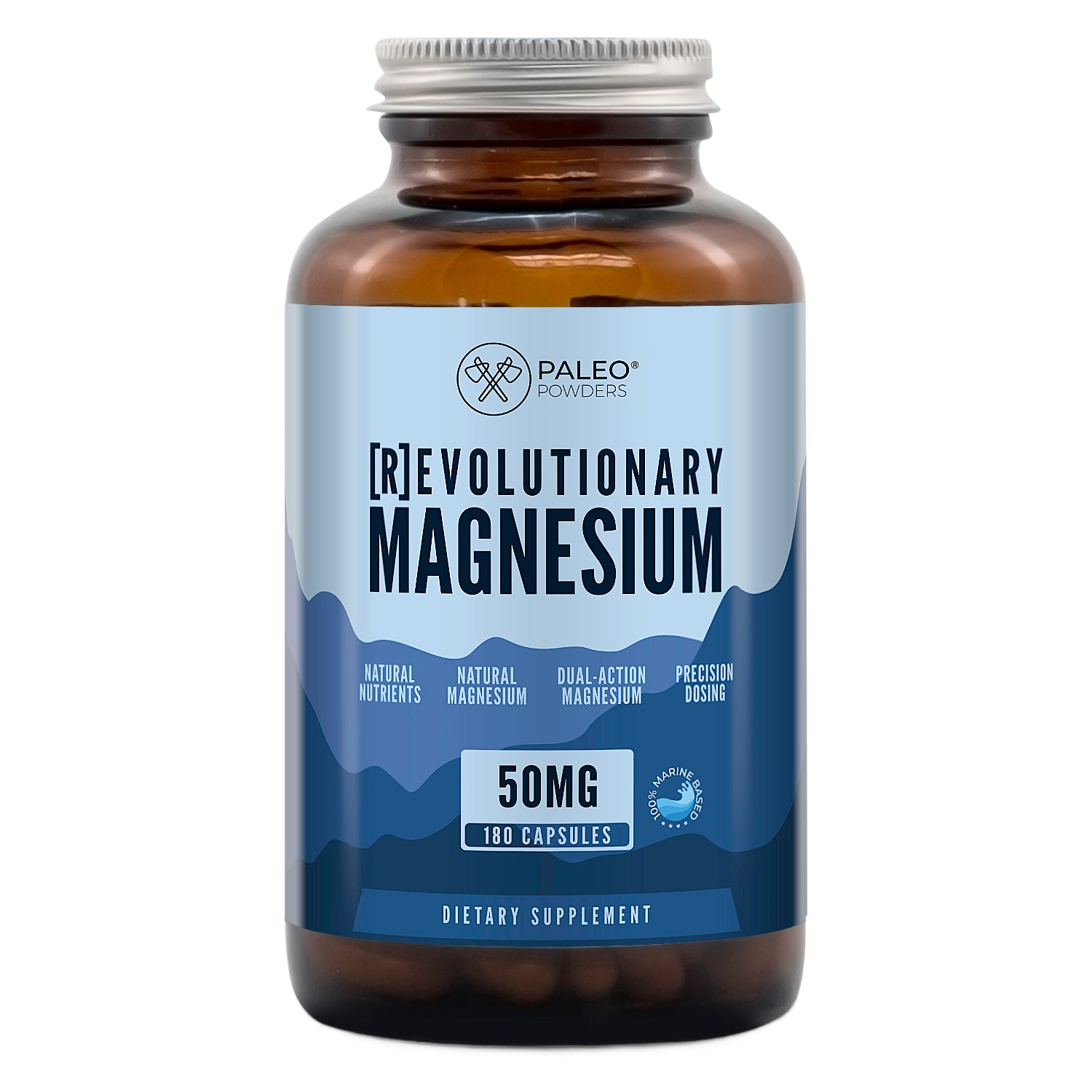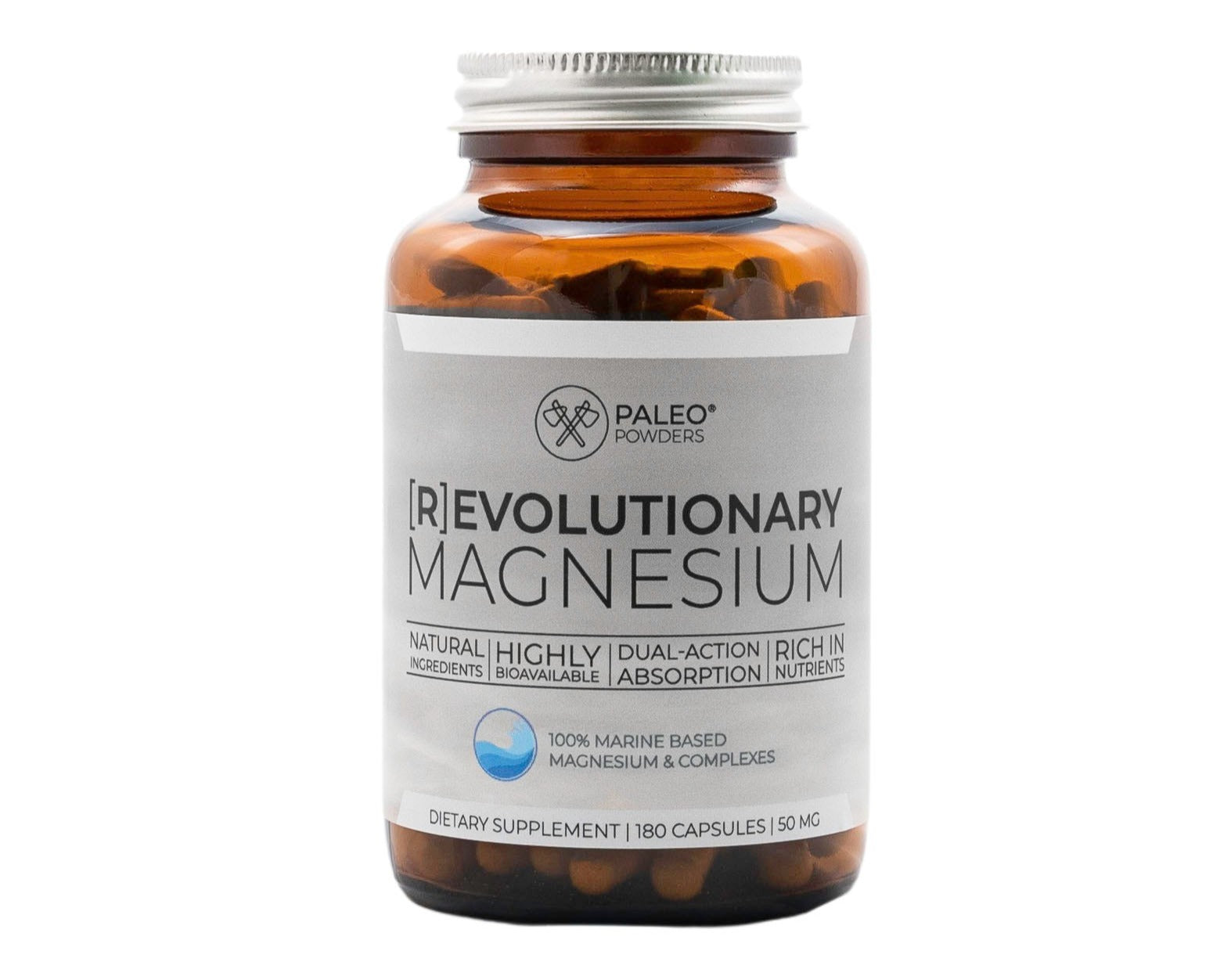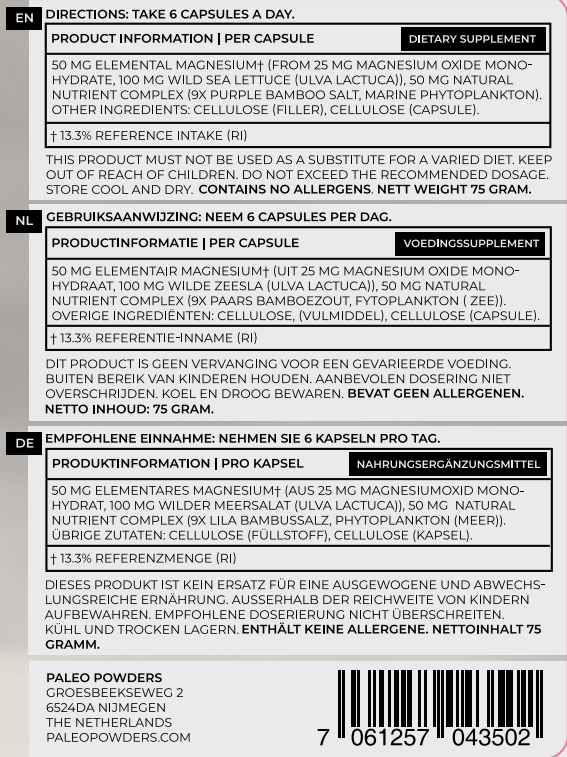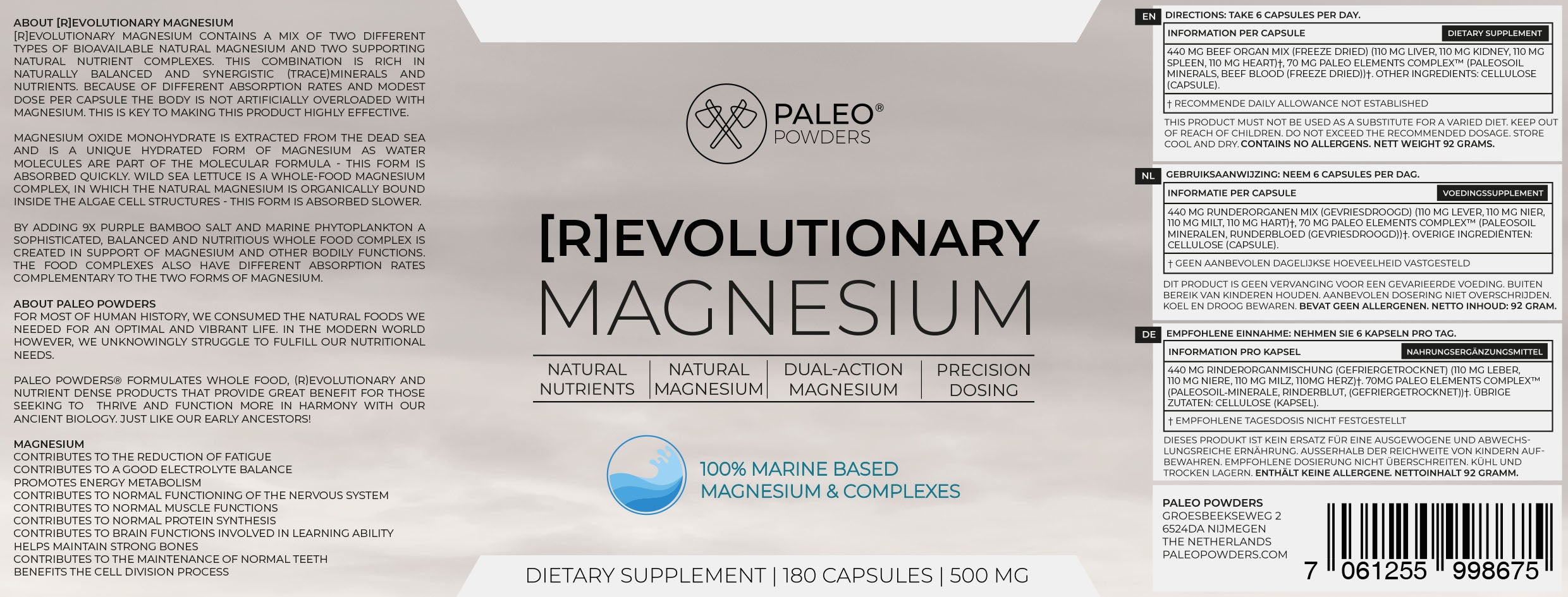
Upgrade your knowledge, part 2 - Minerals & trace elements
Essential nutrients
Minerals are inorganic compounds that the body needs as essential nutrients to function properly. Minerals are one of four groups of essential nutrients, along with vitamins, essential fatty acids and essential amino acids. Minerals are involved in numerous biochemical processes in the body. Without minerals, vitamins cannot function.
We distinguish between macrominerals, of which we need a larger amount every day, and microminerals or trace elements, which occur in small quantities in the body. We need a small amount of this every day. Just like vitamins, minerals and trace elements cannot be synthesized in the body. That is why they are called essential. We get minerals from plant or animal food or from drinking water.
From big bang to supernovae to first solid forms
In the distant past, minerals did not exist in the cosmos. Solids were impossible to form in the superheated maelstrom after the Big Bang. They could never have survived this either. It was only when some gigantic stars, supernovae, were formed and exploded that all the other chemical elements were synthesized and blown into space. Only then could the first solid pieces of minerals have been formed in the expanding, cooling gaseous envelopes of stars.
Co-evolution with biology
It is known that among the ingredients of the solar system 4.6 billion years ago there were only about twelve minerals (crystalline compounds). Now there are more than 4,400 mineral species on Earth. And there are probably many more to discover. The origin of at least two-thirds of the more than 4,000 known mineral species on Earth is directly or indirectly related to biological activity.
They arose as a result of co-evolution with biology. The origin of life, about 4 billion years ago, therefore had a major impact on the evolution of minerals. Co-evolution is the process in which species evolve, as it were, in interaction with each other because a change in one species evokes an evolutionary response in the other and vice versa.
Microorganisms and plants accelerated the production of various clay minerals. In oceans, for example, the evolution of organisms with shells and mineralized skeletons created thick layered deposits of minerals such as calcite.
The building blocks of all life
All current life on Earth consists of six building blocks: oxygen, hydrogen, carbon, nitrogen, phosphorus and sulfur. The four major structural elements in the human body - oxygen, hydrogen, carbon and nitrogen - are not usually mentioned as important minerals. Nitrogen, for example, is considered a mineral for plants. These four elements together make up approximately 96% of the weight of the human body. The most important minerals, the macrominerals and the trace elements, make up the rest. Some minerals are even called ultra-trace elements; we need even less of this in our bodies.
How do we get minerals?
Most inorganic compounds taken up by living organisms are simple in nature. For example, plants absorb dissolved elements in the soil. Herbivores and omnivores then eat these plants and thus the minerals 'move up' the food chain. Several animal species may also eat soil (geophagy) or use mineral resources, such as salt licks, to obtain minerals not available from other dietary sources. Humans obtain minerals by eating plant and animal foods and through drinking water.
How are minerals released?
Bacteria and fungi play an essential role in the release of minerals. For example, cobalt, a component of B12, is only available for use by animals after it has been processed into complex molecules by bacteria. Minerals are used by animals and microorganisms for the process of biomineralization, forming bones, shells, eggshells, exoskeletons and molluscs.
Also in water - oceans, freshwater, groundwater and glacier meltwater systems - minerals are recycled by bacteria spread across the soil. Minerals move up the marine food chain from bacteria and phytoplankton to flagellates and zooplankton, which are then eaten by other marine life. In terrestrial ecosystems, fungi have a similar role to bacteria. They mobilize minerals from matter that is inaccessible to other organisms and then transport these nutrients to local ecosystems.
Macro and micro minerals
As mentioned, our body cannot synthesize minerals. This makes minerals and trace elements essential nutrients that we must obtain from external sources. The five most important minerals in the human body are calcium, phosphorus, potassium, sodium and magnesium. All remaining elements that occur in the body are called trace elements. The trace elements and ultra-trace elements that have specific biochemical functions in the body include sulfur, iron, chlorine, cobalt, copper, zinc, manganese, molybdenum, iodine and selenium.
The function of minerals: electrolytes and catalysts of enzyme systems
Minerals play an important role in the growth, maintenance and repair of tissues. Minerals are also involved in the contraction of muscles, in the conduction of nerve impulses, in energy management, fluid balance and the regulation of the PH. Minerals are partly built into cells, enzymes, tissues, vitamins and hormones. In addition, they do their work as separate components. They fulfill so-called structural and functional roles, in the form of electrolytes.
Trace elements mainly function as catalysts in enzyme systems; some metal ions, such as iron and copper, participate in oxidation-reduction reactions in energy metabolism. Iron, as a component of hemoglobin and myoglobin, also plays a crucial role in the transport of oxygen.
Are all trace elements essential?
Trace elements or trace metals are present in our body in smaller quantities than macrominerals. Whether all trace and ultra-trace elements are also essential is still up for debate. Some are known to be essential. Others may be essential, but there is still inconclusive evidence for this. There are also different opinions about the essential nature of different ultratrace elements, even based on the same data. For example, there is no scientific consensus on whether chromium is an essential trace element in humans. The United States and Japan consider chromium an essential nutrient, but the European Food Safety Authority (EFSA) classified chromium as non-essential in 2014.
Optimal intake
One problem with identifying efficacy in the body is that some elements are harmless at low concentrations but are ubiquitous. It cannot therefore be sufficiently proven that they are effective, because shortcomings are difficult to reproduce. Ultratrace elements such as silicon and boron are known to play a role in the body, but their exact biochemical nature is still unknown. Others, such as arsenic, are suspected of playing a role in health, but there is weaker evidence for this.
All trace elements are toxic if ingested at high enough levels for long enough. The difference between an optimal intake and a toxic intake of essential trace elements is large for some elements, but much smaller for others. Minerals are therefore essential and crucial for the proper functioning of the body, but on the other hand it concerns the intake of milligrams and more often micrograms. At least twenty minerals are now known to support biochemical processes and mechanisms of action in the body.
Magnesium - 100% Natural - 180 capsules
















